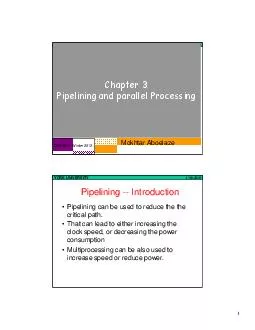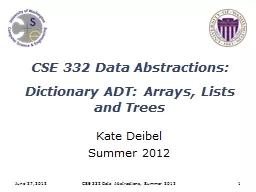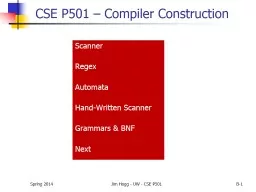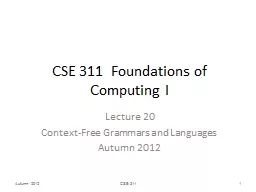PPT-Spring 2019 CSE 1321 Modules 6-8 Review
Author : marina-yarberry | Published Date : 2019-12-01
Spring 2019 CSE 1321 Modules 68 Review Module 6 OOP amp Classes Classes are A complex data type A way of representing the concept of real life objects Classes have
Presentation Embed Code
Download Presentation
Download Presentation The PPT/PDF document "Spring 2019 CSE 1321 Modules 6-8 Review" is the property of its rightful owner. Permission is granted to download and print the materials on this website for personal, non-commercial use only, and to display it on your personal computer provided you do not modify the materials and that you retain all copyright notices contained in the materials. By downloading content from our website, you accept the terms of this agreement.
Spring 2019 CSE 1321 Modules 6-8 Review: Transcript
Download Rules Of Document
"Spring 2019 CSE 1321 Modules 6-8 Review"The content belongs to its owner. You may download and print it for personal use, without modification, and keep all copyright notices. By downloading, you agree to these terms.
Related Documents














